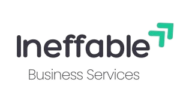Digital advertising has evolved rapidly in recent years, offering brands more ways to reach potential customers. Two powerful and commonly used options are Facebook Ads and Native Ads. While both can drive traffic, increase conversions, and build brand awareness, they work in different ways and serve different marketing goals.
In this blog post, we’ll break down the key differences between Facebook Ads vs Native Ads, their pros and cons, and how to decide which one is better for your business.
What Are Facebook Ads?
Facebook Ads are paid advertisements that appear on Meta-owned platforms like Facebook, Instagram, Messenger, and the Audience Network. These ads are created and managed through Meta Ads Manager, allowing advertisers to target users based on age, location, interests, behaviors, job roles, and more.
Facebook Ads formats include:
- Image Ads
- Video Ads
- Carousel Ads
- Stories Ads
- Reels Ads
- Collection Ads
These ads are typically displayed in feeds, stories, or the sidebars of Meta’s apps.
What Are Native Ads?
Native Ads are paid ads that blend seamlessly into the content of the platform where they appear. Unlike traditional banners or pop-ups, native ads mimic the look, feel, and function of organic content.
You’ll often see native ads on:
- News websites (e.g., Forbes, CNN)
- Blog articles
- Mobile apps
- Content recommendation widgets like Outbrain, Taboola, or MGID
Examples of native ad formats include:
- Sponsored articles
- Recommended content widgets
- In-feed ads on publisher sites
Facebook Ads vs Native Ads: Key Differences
| Feature | Facebook Ads | Native Ads |
|---|---|---|
| Platform | Facebook, Instagram, Messenger | News sites, blogs, apps, content networks |
| Ad Appearance | Clearly labeled as ads in social feeds | Blended into editorial content |
| Targeting | Demographics, interests, behavior, lookalikes | Contextual, demographic, device, location |
| User Intent | Disruptive (interrupts social experience) | Non-disruptive (matches content environment) |
| Engagement Style | Quick scroll behavior, high interaction | Passive reading, softer engagement |
| Best For | Social engagement, direct sales, retargeting | Content promotion, brand awareness, soft conversions |
| Cost Model | CPC (Cost per Click), CPM (Impressions) | Usually CPC or CPM through third-party platforms |
| Conversion Tracking | Built-in via Meta Pixel and analytics | Requires UTM tracking or platform integrations |
Pros and Cons of Facebook Ads
Pros:
- Highly advanced targeting options
- Rich ad formats including video and carousels
- Retargeting is easy using Meta Pixel
- Massive reach and daily active users
Cons:
- Competitive and sometimes costly for certain niches
- May face ad fatigue due to frequent repetition
- Requires constant creative testing to avoid poor CTR
Pros and Cons of Native Ads
Pros:
- Seamlessly blends with content for higher trust
- Less intrusive than traditional ads
- Great for top-of-funnel content like blog posts or eBooks
- High CTR on quality content
Cons:
- Lower purchase intent compared to Facebook
- Results may take longer (best for long-term strategy)
- More effort needed to create quality content and landing pages
- Some platforms may lack advanced analytics
When Should You Use Facebook Ads?
Choose Facebook Ads if:
- You want fast results and real-time campaign control
- You are promoting time-sensitive offers or discounts
- Your goal is sales, app installs, or retargeting
- Your target audience is active on Facebook or Instagram
Facebook Ads are excellent for direct response marketing — they’re designed to drive users to take immediate action.
When Should You Use Native Ads?
Choose Native Ads if:
- You want to promote long-form content or blog articles
- Your goal is to educate and inform before selling
- You prefer content marketing and storytelling over hard selling
- You aim to build brand credibility in a subtle way
Native Ads are ideal for top-of-funnel marketing and nurturing audiences through valuable content.
Final Verdict: Facebook Ads vs Native Ads — Which Is Better?
There is no one-size-fits-all answer. The choice depends on your campaign goals:
- For sales, conversions, and aggressive retargeting: Go with Facebook Ads
- For brand awareness, content distribution, and soft conversions: Choose Native Ads
Many successful marketers actually use both in a combined strategy. For example, they use native ads to drive users to a blog post, then retarget those visitors on Facebook with a special offer.
